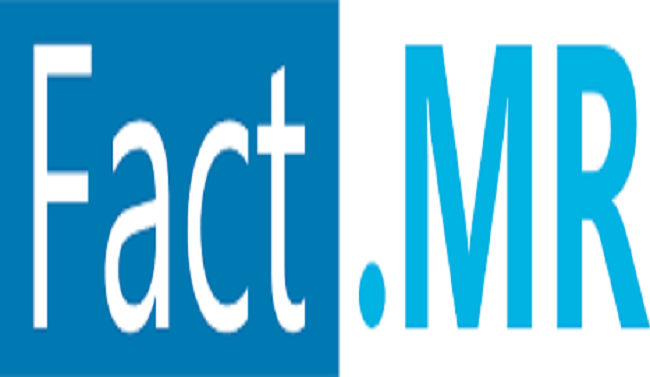The global alkyl polyglucoside surfactant market is forecasted to reach US$1.34 billion in 2024 and grow at a 6.6% CAGR, reaching US$2.54 billion by 2034.
The alkyl polyglucoside (APG) surfactant market has witnessed a significant rise due to the growing demand for eco-friendly and biodegradable surfactants. APGs are non-ionic surfactants derived from renewable resources such as natural sugars and fatty alcohols, making them an attractive alternative to traditional, petroleum-based surfactants. These surfactants are widely used in a variety of applications, including personal care products, household cleaning formulations, industrial and institutional cleaning, and agricultural chemicals. Their mildness, effectiveness in hard water, and low toxicity have driven their popularity in a wide range of industries, particularly as consumers become more conscious about sustainability and environmental impact. As industries strive to replace harmful chemicals with safer, green alternatives, the demand for APG surfactants continues to expand.
Market Insights
The alkyl polyglucoside surfactant market is shaped by several key factors, including growing consumer awareness of environmentally friendly and sustainable products. APGs offer significant advantages over conventional surfactants, such as being gentle on the skin, highly biodegradable, and less toxic to aquatic life. This has led to their increasing adoption in personal care products, particularly in skin cleansers, shampoos, and body washes. APGs are also increasingly utilized in household cleaning products due to their mild nature and effectiveness at lower concentrations. Another important development is the growing demand for natural ingredients in cosmetics and household products, which has pushed APGs to the forefront as they align well with the clean beauty and green chemistry trends. Furthermore, APGs' ability to function well in a variety of formulations, from low-foam to high-foam, has made them versatile, contributing to their growth across multiple sectors.
Market Outlook
Looking ahead, the outlook for the alkyl polyglucoside surfactant market is highly promising. As the push for sustainability intensifies globally, industries are expected to continue shifting toward renewable, biodegradable, and safer alternatives to conventional surfactants. Governments and regulatory agencies are also playing a pivotal role in encouraging the use of more sustainable surfactants through stricter environmental regulations, which will further drive the adoption of APGs. The personal care industry, in particular, is anticipated to remain a key growth driver, with consumers increasingly prioritizing natural and environmentally friendly products. Furthermore, the expanding awareness of the environmental impact of chemicals in detergents, cleaning agents, and agricultural formulations is expected to create new opportunities for the market. With advancements in formulation technologies, APG surfactants are likely to witness even wider adoption, especially as new production processes reduce costs and improve performance in industrial applications.
List of Key Companies Profiled in The Report
- BASF SE
- Croda International Plc
- SEPPIC S.A.
- Clariant AG
- Lubon Industry
- Huntsman Corporation
- Others
Recent Industry News
Recent industry developments highlight the growing importance of alkyl polyglucoside surfactants as part of the broader shift toward sustainability in various sectors. Major manufacturers have made strides in improving the efficiency of APG production, focusing on reducing costs and increasing supply to meet rising demand. Several companies have also made efforts to expand their product portfolios, offering a broader range of APG-based products for use in cosmetics, household cleaning products, and industrial formulations. Additionally, the market has seen significant investment in research and development to enhance the performance characteristics of APGs, including improving their foaming properties and effectiveness in hard water. In regulatory news, there has been an increased focus on sustainability and safety standards, pushing brands to adopt APGs to comply with new environmental regulations and consumer demands for safer products.
Notable Developments
Notable developments in the alkyl polyglucoside surfactant market include the ongoing expansion of production capabilities to meet global demand, particularly in emerging markets where the interest in natural and biodegradable ingredients is rising. Companies are increasingly focusing on improving the performance of APG surfactants, with a focus on enhancing their foaming, emulsifying, and wetting properties, which are crucial for use in personal care, industrial, and household cleaning applications. Furthermore, there has been a surge in collaborations between APG manufacturers and consumer goods companies, which has accelerated the development and commercialization of innovative formulations that incorporate APGs. In line with the growing trend toward sustainability, some companies are investing in renewable raw materials and more efficient production processes to reduce the environmental footprint of APG production. These efforts are expected to continue driving growth in the APG surfactant market as more industries transition to greener, safer, and more sustainable alternatives.
Competitive Landscape
In November 2019, BASF expanded its alkyl polyglucoside (APG) production capacity at its Jinshan, China facility by 10,000 metric tons, increasing the total capacity from 20,000 to 30,000 metric tons. The company plans further capacity expansion by an additional 10,000 metric tons.
In July 2023, Procter & Gamble developed a shampoo incorporating alkyl polyglucoside, sclerotium gum, cationic polymer, and an ionic surfactant, with a viscosity range of 0.6 Pa-s to 20 Pa-s.



